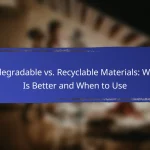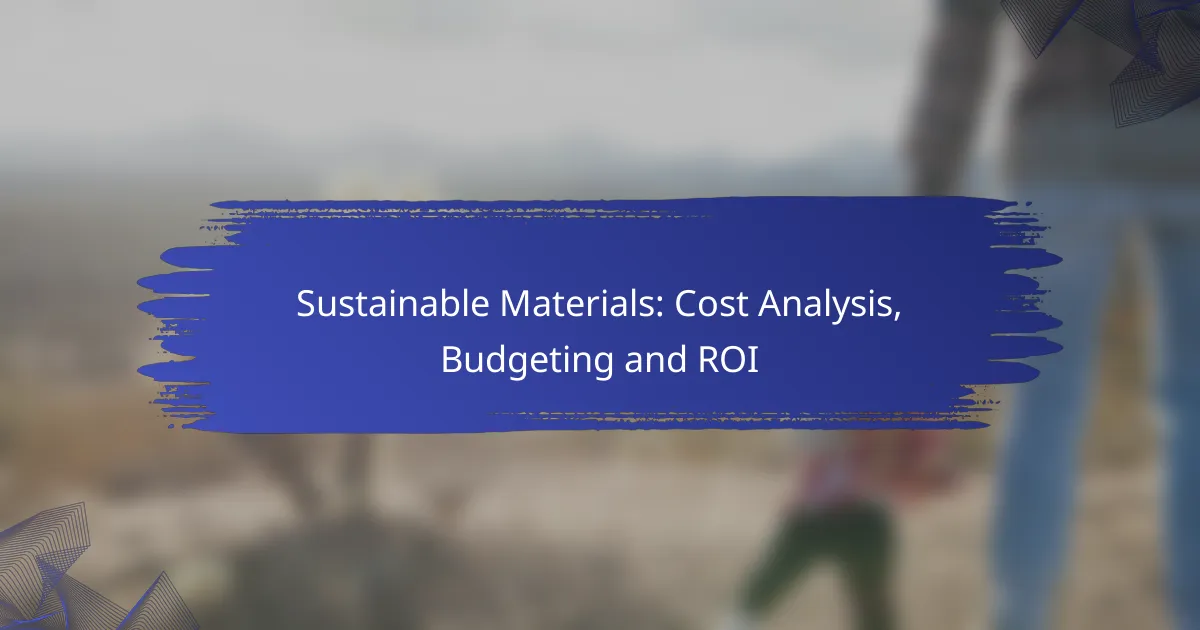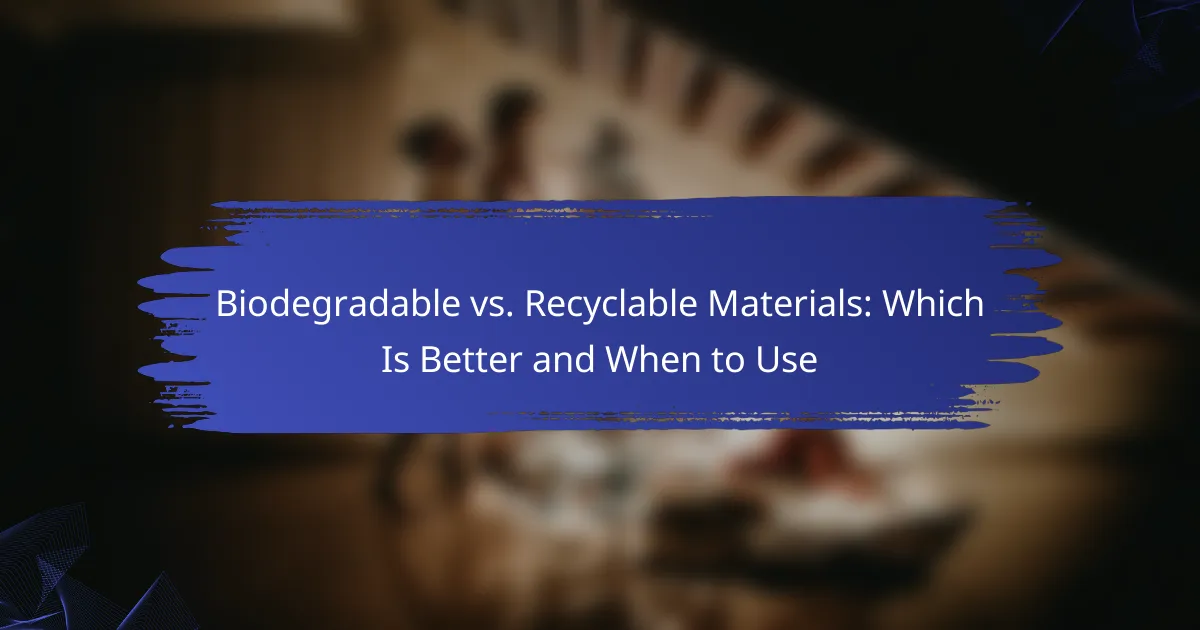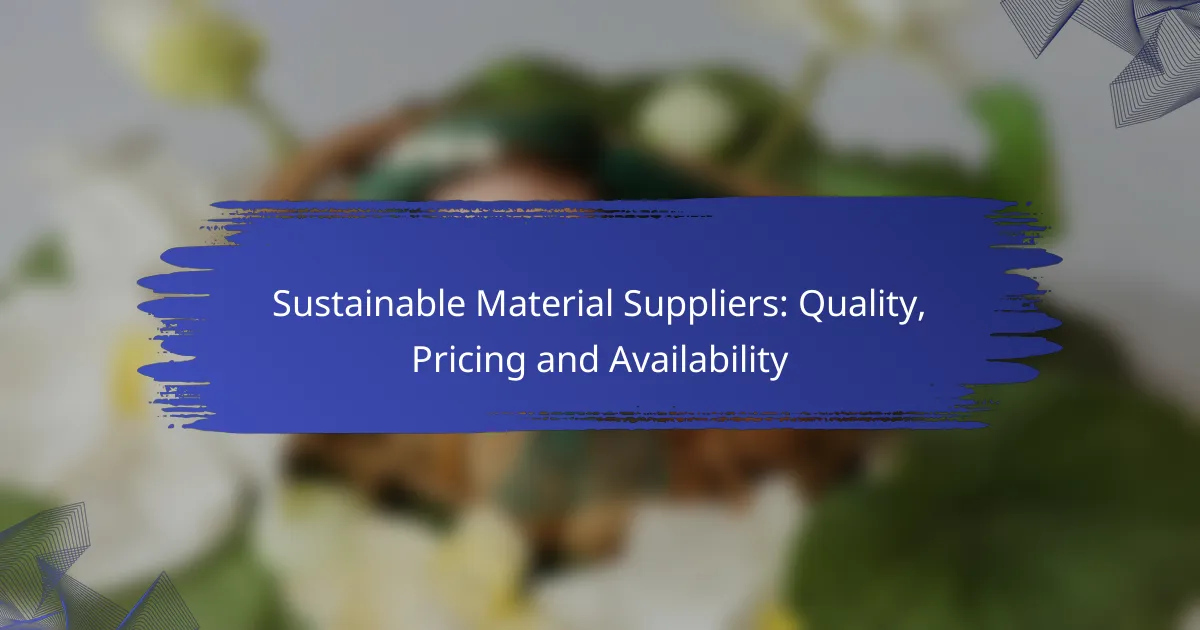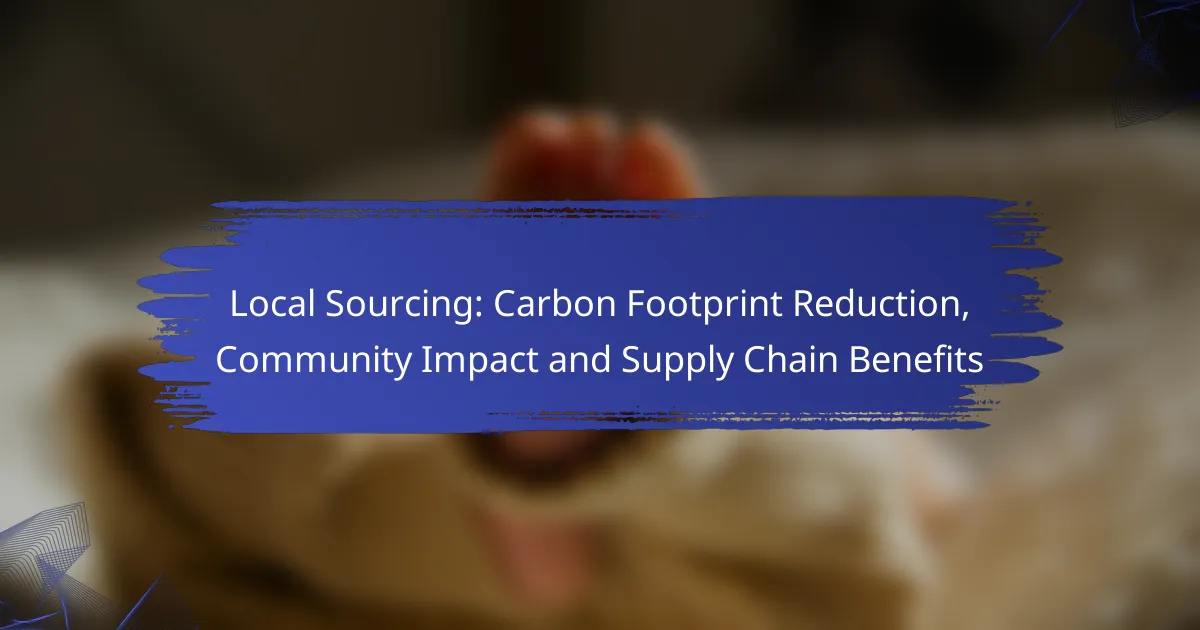Investing in sustainable materials for construction presents a unique cost analysis challenge, as initial expenses may be higher than traditional options. However, the long-term benefits, including cost savings and enhanced brand reputation, often outweigh these upfront costs. Effective budgeting requires a focus on materials that not only meet sustainability goals but also offer favorable lifecycle costs, ultimately leading to a positive return on investment.
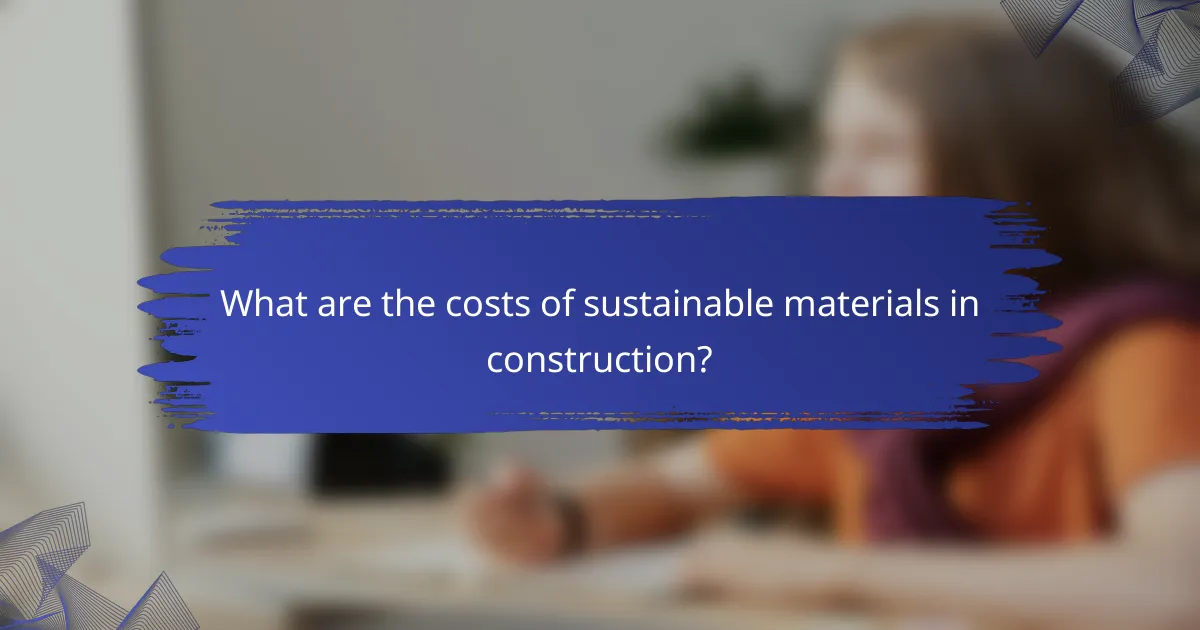
What are the costs of sustainable materials in construction?
The costs of sustainable materials in construction can vary significantly based on the type of materials used and the project’s scale. While initial expenses may be higher, the long-term benefits often justify the investment.
Initial investment costs
Initial investment costs for sustainable materials typically range from 10% to 30% higher than traditional materials. This increase is often due to the sourcing of eco-friendly products and advanced technologies used in their production.
For instance, using reclaimed wood or recycled steel can incur higher upfront costs but may enhance the building’s aesthetic and durability. It’s crucial to budget for these expenses early in the project planning phase.
Long-term savings
Long-term savings from sustainable materials can be substantial, often resulting in reduced energy and maintenance costs. Buildings constructed with energy-efficient materials can see energy bills decrease by 20% to 50% over time.
Additionally, sustainable materials often have longer lifespans, which can lead to lower replacement costs. Investing in high-quality insulation or energy-efficient windows can significantly reduce heating and cooling expenses in the long run.
Comparative costs with traditional materials
When comparing costs with traditional materials, sustainable options may appear pricier initially but can offer better value over time. For example, while conventional concrete is less expensive upfront, sustainable alternatives like permeable pavers can reduce stormwater management costs.
It’s essential to consider the total cost of ownership, which includes installation, maintenance, and operational costs. This holistic view can help justify the higher initial investment in sustainable materials.

How to budget for sustainable materials?
Budgeting for sustainable materials involves assessing costs while considering long-term benefits and environmental impact. To effectively allocate funds, prioritize materials that align with sustainability goals and evaluate their lifecycle costs.
Budgeting strategies
Start by setting clear sustainability objectives that guide your material choices. Use a phased approach to budgeting, allowing for adjustments as you gather data on material performance and costs. Consider allocating a percentage of your overall budget specifically for sustainable options, typically ranging from 5% to 15% depending on project scope.
Incorporate a contingency fund for unexpected expenses related to sustainable materials, as these can sometimes exceed initial estimates. Regularly review and adjust your budget based on actual spending and project needs to stay on track.
Cost breakdown by material type
Different sustainable materials come with varying costs. For example, bamboo flooring can range from $3 to $8 per square foot, while recycled steel might cost between $0.50 and $1.50 per pound. Understanding these ranges helps in making informed decisions based on your budget.
Additionally, consider the long-term savings associated with energy-efficient materials, such as insulated windows, which may have higher upfront costs but can lead to significant savings on energy bills over time. A thorough cost breakdown will help you weigh initial investments against future savings.
Financing options for sustainable projects
Explore various financing options to support your sustainable materials budget. Green loans and grants are available from government programs and private institutions, often offering lower interest rates for eco-friendly projects. Research local incentives that may apply, such as tax credits or rebates for using sustainable materials.
Another option is to consider partnerships with organizations focused on sustainability, which may provide funding or resources to help offset costs. Crowdfunding platforms can also be a viable way to raise funds for specific sustainable initiatives, allowing community support to play a role in financing your project.
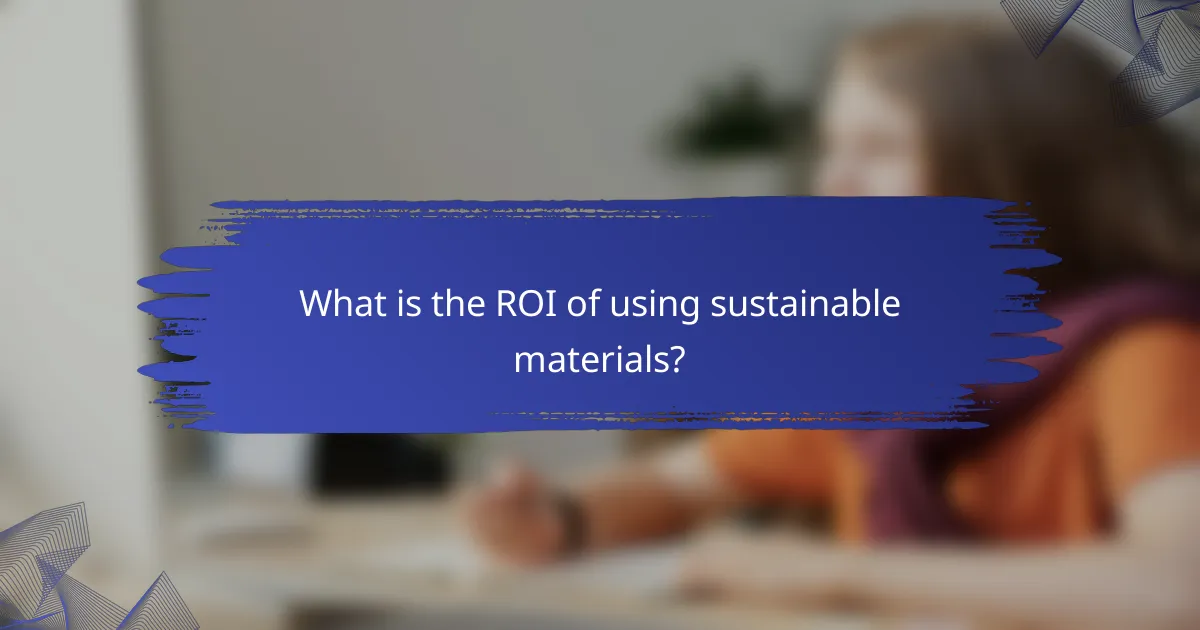
What is the ROI of using sustainable materials?
The return on investment (ROI) of using sustainable materials can be significant, often leading to cost savings, enhanced brand reputation, and compliance with regulations. Companies that invest in these materials typically see a positive financial return over time, as they reduce waste and energy consumption while appealing to environmentally conscious consumers.
ROI calculation methods
Calculating ROI for sustainable materials involves comparing the costs of traditional materials against those that are eco-friendly. A common formula is: (Net Profit from Sustainable Materials – Cost of Sustainable Materials) / Cost of Sustainable Materials. This calculation can help businesses assess the financial benefits over a specific period.
Additionally, consider including indirect benefits such as improved employee morale and customer loyalty, which can enhance overall profitability. Tracking metrics like reduced energy costs or waste disposal fees can also provide a clearer picture of ROI.
Case studies demonstrating ROI
Numerous companies have successfully implemented sustainable materials and reported positive ROI. For instance, a furniture manufacturer that switched to reclaimed wood saw a 25% reduction in material costs and a significant increase in sales due to its eco-friendly branding.
Another example is a packaging company that adopted biodegradable materials, leading to a 30% decrease in production costs and a boost in market share as consumers favored their sustainable options. These case studies illustrate the tangible financial benefits of investing in sustainable materials.
Factors influencing ROI
Several factors can influence the ROI of sustainable materials, including initial investment costs, market demand, and regulatory incentives. Higher upfront costs may be offset by long-term savings and increased sales, particularly in markets where consumers prioritize sustainability.
Additionally, government incentives or subsidies for using eco-friendly materials can enhance ROI. Companies should also consider the lifecycle of the materials, as longer-lasting products can lead to greater savings over time.
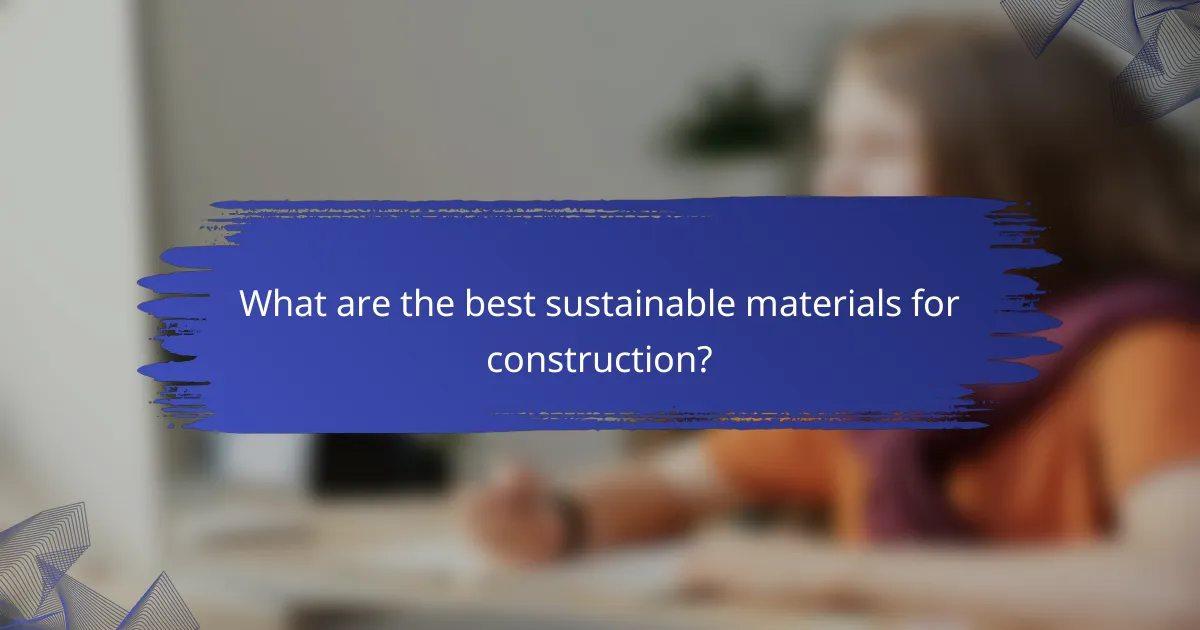
What are the best sustainable materials for construction?
The best sustainable materials for construction include bamboo, recycled steel, and hempcrete. These materials not only reduce environmental impact but also offer durability and cost-effectiveness when properly utilized.
Bamboo as a sustainable option
Bamboo is a rapidly renewable resource that grows much faster than traditional timber, making it an excellent sustainable option. It has a high strength-to-weight ratio, which allows for lightweight structures that require less energy for transportation and installation.
When considering bamboo for construction, ensure it is sourced from sustainable plantations. Look for certifications like FSC (Forest Stewardship Council) to guarantee responsible harvesting practices.
Recycled steel benefits
Recycled steel is an eco-friendly choice that significantly reduces the need for new raw materials. Using recycled steel can lower energy consumption by up to 75% compared to producing new steel, making it a cost-effective option in the long run.
Incorporating recycled steel into construction projects can also enhance structural integrity and longevity. Be mindful of local regulations regarding the use of recycled materials, as some regions may have specific standards to meet.
Hempcrete advantages
Hempcrete is a biocomposite material made from hemp hurds and lime, offering excellent insulation properties. It is lightweight, non-toxic, and contributes to carbon sequestration, making it a highly sustainable building material.
When using hempcrete, it is essential to pair it with a structural frame, as it is not load-bearing. Additionally, check local building codes to ensure compliance with regulations regarding hemp-based materials.

How do regulations affect sustainable material costs?
Regulations significantly impact the costs associated with sustainable materials by establishing standards that can either increase or decrease expenses. Compliance with these regulations often requires investment in higher-quality materials or technologies, but can also lead to long-term savings and incentives.
Building codes and standards
Building codes and standards dictate the minimum requirements for construction materials and practices, including sustainability criteria. For instance, codes may mandate the use of energy-efficient materials, which can initially raise costs but ultimately reduce energy expenses over time. Understanding local codes is essential for budgeting, as they can vary widely by region.
In the United States, for example, the International Energy Conservation Code (IECC) sets guidelines that encourage the use of sustainable materials. Familiarizing yourself with these codes can help identify potential cost savings and avoid penalties for non-compliance.
Incentives for using sustainable materials
Many governments offer financial incentives to encourage the use of sustainable materials, which can offset initial costs. These incentives may include tax credits, rebates, or grants aimed at promoting eco-friendly building practices. For instance, in the European Union, various programs provide funding for projects that utilize renewable resources.
When planning a project, it’s crucial to research available incentives in your area. Engaging with local authorities or industry associations can provide insights into current programs and help maximize your budget while adhering to sustainability goals.


